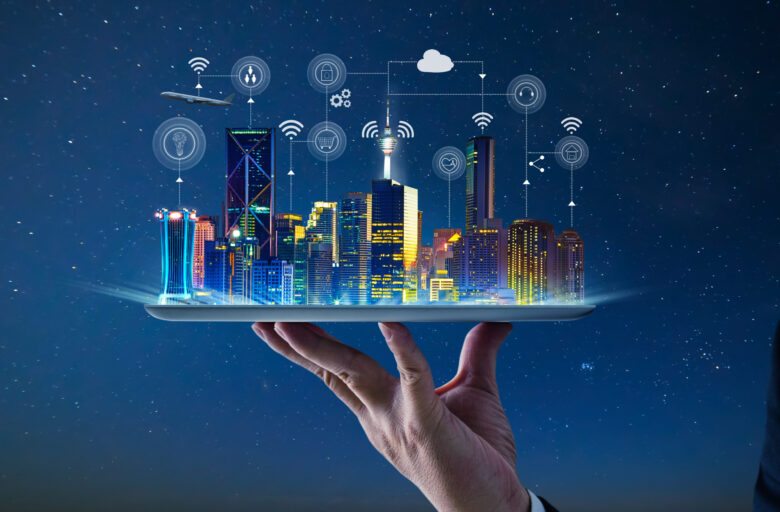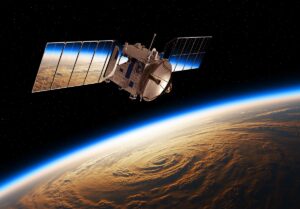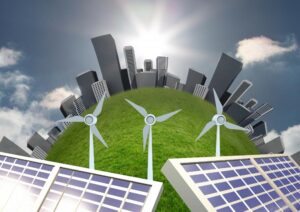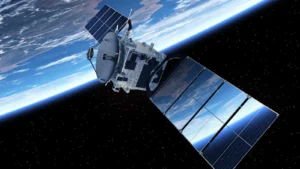The Internet of Things (IoT) is changing many different areas, but one of the biggest impacts is the development of smart cities. Smart cities use IoT technology to improve their facilities, improve public services, and make their cities more sustainable places to live. The Internet of Things (IoT) plays a key role in making cities more efficient, resilient, and liveable by connecting gadgets, collecting data, and enabling people to make informed decisions. This article describes the many ways IoT is transforming smart cities and how it can improve city life.
1. Enhanced Infrastructure and Utilities Management
IoT makes dealing with infrastructure and utilities easier, which is one of the most important roles in smart cities. In cities, sensors and devices that can be connected to the Internet of Things (IoT) are used to control and monitor utilities such as water, electricity, and natural gas. These sensors collect real-time information about usage trends, leaks, and issues, which helps in properly maintaining and managing resources. For example, smart grids use IoT to improve energy distribution by balancing supply and demand, reducing energy waste, and increasing renewable energy. Smart water management systems detect leaks immediately, so water does not escape and the flow is stable. These tools not only improve services but also help cities become more sustainable by saving resources and reducing their environmental footprint.
2. Strengthen Transportation Management
IoT is an important part of improving transportation and traffic control in smart cities. Connected cameras, sensors, and traffic lights collect information about how traffic moves, how fast cars are moving, and where traffic jams occur. The data is used to improve traffic light timing, control traffic flow, and reduce congestion. IoT enables smart parking systems to provide drivers with real-time information about available parking spaces. This allows them to find the nearest place faster. This not only ensures smoother traffic flow but also uses less fuel and emits fewer pollutants. IoT can also help create smart public transport systems that provide real-time information about routes, schedules, and delays, making urban transport easier and faster.
3. Public Safety
One of the main goals of smart cities is to keep people safe, and IoT technology is an important part of that. Surveillance cameras, sensors, and emergency response systems connected to the Internet of Things (IoT) make it easier to observe and respond to incidents as they occur. Law enforcement organizations can use information obtained from these systems to detect and stop criminal activity, respond to emergencies, and ensure public safety. Smart street lighting systems equipped with Internet of Things (IoT) sensors can change the amount of light based on real-time conditions. This makes it more visible and safer while using less energy. Additionally, IoT technology is used in emergency management systems to monitor conditions such as temperature, air quality, and earthquakes. This allows early warning systems to notify officials and residents of potential hazards so people can get out and help immediately.
4. Waste Management and Environmental Monitoring
IoT technology is changing the way smart cities deal with waste and care for the environment. IoT-enabled sensors in smart waste management systems monitor how full the bins are and find the best collection routes. This ensures that waste is collected quickly and efficiently, reducing costs and reducing environmental damage from waste disposal. IoT sensors in environmental tracking systems monitor air quality, noise levels, and water in real-time. This information can help city officials find the source of waste, take steps to reduce waste and ensure environmental laws are followed. For example, air quality sensors can detect harmful pollutants and provide alerts when concentrations exceed safe levels. This means that action must be taken quickly to protect public health.
5. Better Medical Services
IoT technology is changing the way healthcare is delivered in smart cities, making access to care easier and improving health outcomes. Wearable health monitors and remote patient monitoring systems are examples of IoT devices that collect real-time health data and send it to healthcare providers. This allows doctors to monitor the health of their patients so that problems can be detected early and resolved quickly. Smart cities use IoT to connect healthcare systems, including emergency services, hospitals, and clinics. For example, IoT-enabled ambulance services can provide hospitals with real-time insight into patients’ conditions, helping them prepare for emergencies and speed up response times. IoT technology also supports telemedicine services, allowing people to talk to doctors from afar, reducing the need for in-person meetings.
6. Citizen Service and Participation
IoT technology enables smart cities to involve more people and provide better services to residents. Smart city platforms connect many Internet of Things (IoT) gadgets and data sources into interactive and user-friendly interfaces. These platforms provide residents with up-to-date information about city services, events, and public transport, so they can make better choices and access services faster. IoT-enabled mobile apps allow people to report problems such as potholes, broken streetlights, and graffiti directly to the city government. This encourages preventive maintenance and improves the overall standards of urban infrastructure. Smart city platforms also make it easier for people to participate in decision-making by giving them feedback and ideas.
Conclusion
The Internet of Things (IoT) plays an important role in smart cities and enables new ideas to improve city life. IoT technology is transforming many aspects of city life, from transportation and public safety to healthcare and civic engagement. This is done by connecting devices, making decisions based on data, and improving infrastructure. As smart cities continue to develop, IoT integration will become an important part of making cities safer, more efficient, and more livable in the future.
FAQs
1. What role does the Internet of Things play in traffic management?
IoT improves traffic and traffic control by connecting cameras, sensors, and traffic lights to collect and analyze traffic flow and congestion data. The data is used to improve traffic light timing, control traffic flow, and reduce congestion. Smart parking and public transport systems also make it easier to get around the city.
2. How can IoT help keep people safe?
The Internet of Things (IoT) helps keep people safe by connecting devices such as security cameras, sensors, and emergency response systems. These technologies provide law enforcement agencies with real-time information, allowing them to detect and stop crime, respond to emergencies, and protect the public. Smart disaster management and light streets make cities safer.
3. How can IoT make it easier to remove waste and take care of the environment?
IoT enables better waste management by using sensors that monitor how full bins are and find the best collection routes, ensuring fast and efficient waste collection. Real-time monitoring of noise levels, water quality, and air quality through environmental monitoring systems can help officials find sources of pollution and take measures to reduce them to protect public health and encourage sustainable development.
4. How can IoT improve healthcare in smart cities?
IoT improves healthcare through wearable technology and remote patient monitoring systems that monitor people’s health. These devices collect health information in real-time, allowing early detection and rapid treatment of health problems. IoT also helps medical services and connected healthcare systems function better, making it easier for people to access care and improve their health.
5. How can IoT make it easier for people to use and participate in services?
IoT makes it easier for people to participate by connecting various gadgets and data sources to smart city platforms that display up-to-date information about public transport, city services, and events. Mobile apps allow people to report issues directly to city officials, encouraging proactive solutions and improving service delivery. IoT also gives people a say in how decisions are made.



